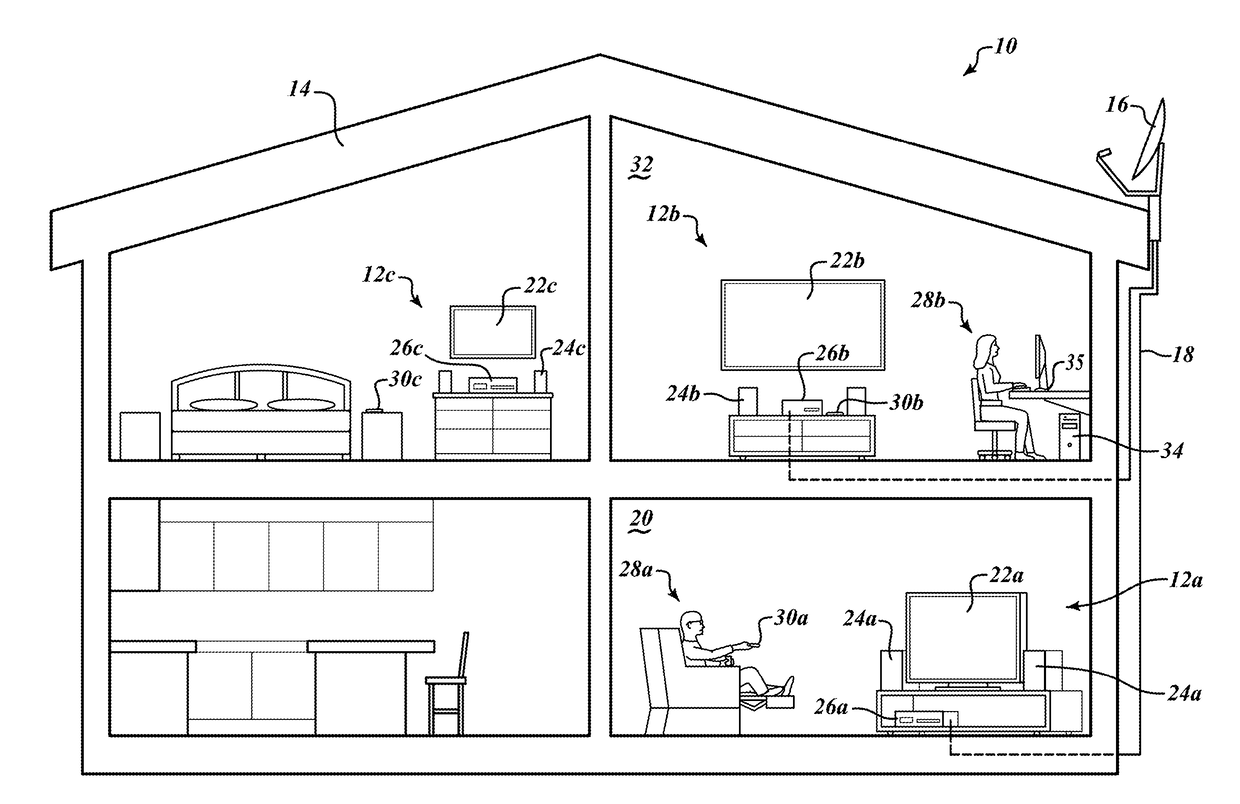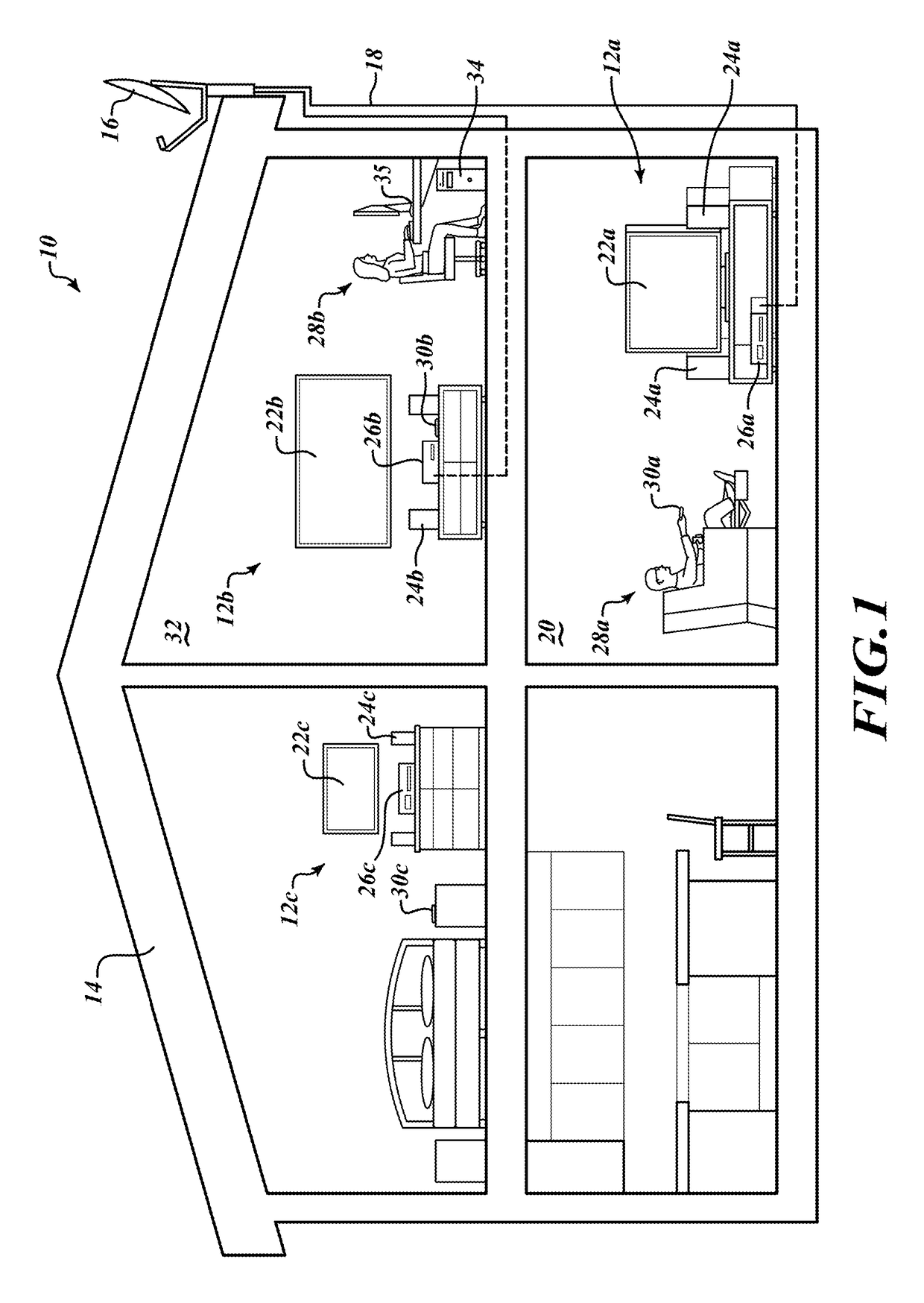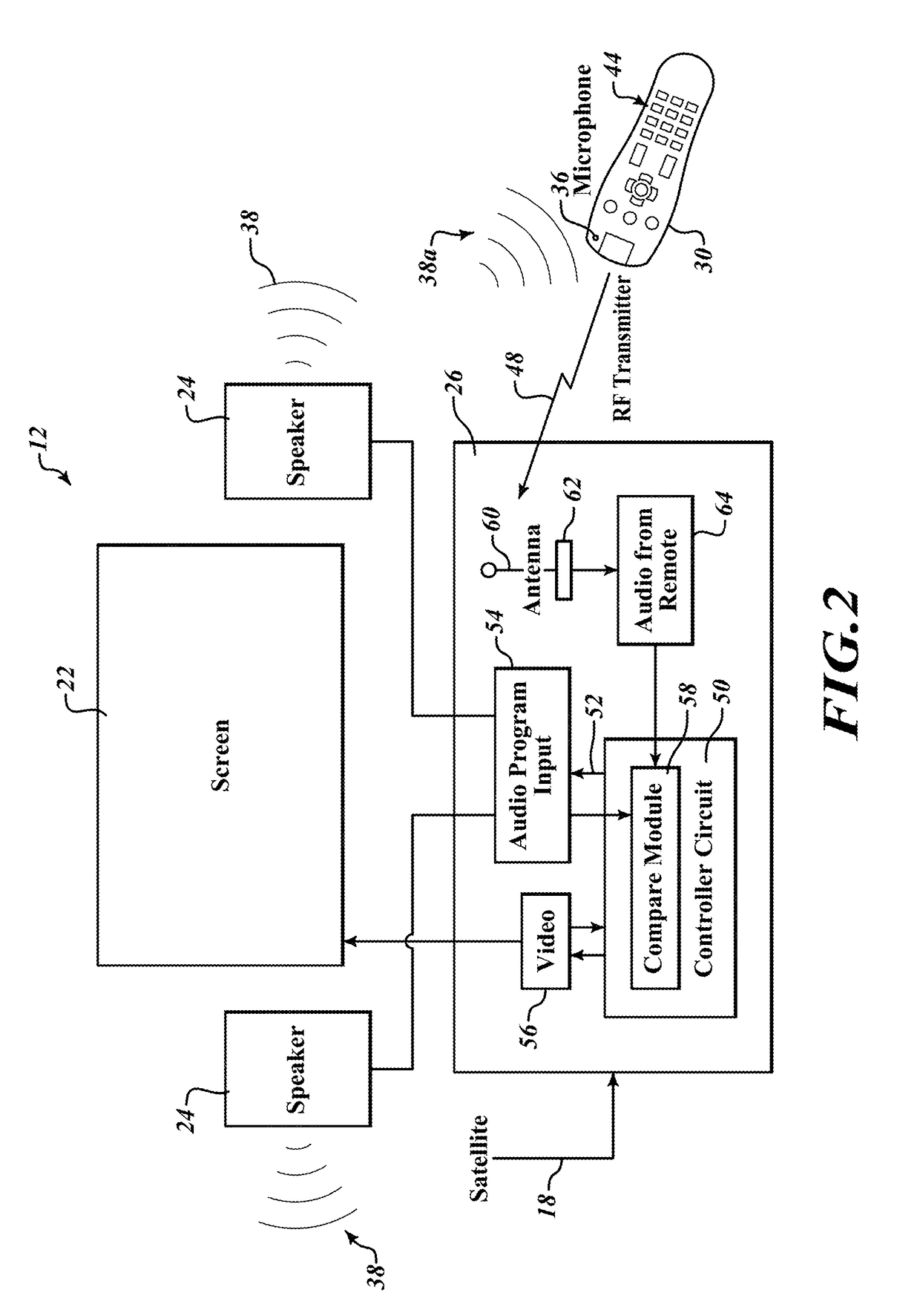Remote control with microphone used for pairing the remote control to a system and method of using the same
a remote control and microphone technology, applied in transmission systems, selective content distribution, instruments, etc., can solve the problem that one remote control cannot control that particular a/v system, and achieve the effect of reducing volume, increasing volume, and reducing volum
- Summary
- Abstract
- Description
- Claims
- Application Information
AI Technical Summary
Benefits of technology
Problems solved by technology
Method used
Image
Examples
Embodiment Construction
[0025]FIG. 1 illustrates a network 10 having a plurality of A / V systems 12 connected to the same network. In the particular example shown, the network 10 is inside a single home 14. The home 14 has a satellite dish 16 which receives a satellite signal which has been broadcast, such as output by EchoStar, DISH Network, or other satellite broadcast system. The program signal is received by the satellite dish 16 and then carried on cables 18 to the various A / V systems 12 located in different rooms of the house. The input for each of the A / V systems 12 could also be a ground-based cable, such as that used by a cable provider, a TV or radio broadcast system, an Internet system or a similar type input provided by many companies and delivered over optical fibers or other systems. Thus, the cables 18 represent the signal line into the home that receives the A / V program which is available to be viewed and heard on that particular A / V system 12.
[0026]As shown in FIG. 2, each A / V system 12 pre...
PUM
 Login to View More
Login to View More Abstract
Description
Claims
Application Information
 Login to View More
Login to View More - R&D
- Intellectual Property
- Life Sciences
- Materials
- Tech Scout
- Unparalleled Data Quality
- Higher Quality Content
- 60% Fewer Hallucinations
Browse by: Latest US Patents, China's latest patents, Technical Efficacy Thesaurus, Application Domain, Technology Topic, Popular Technical Reports.
© 2025 PatSnap. All rights reserved.Legal|Privacy policy|Modern Slavery Act Transparency Statement|Sitemap|About US| Contact US: help@patsnap.com



